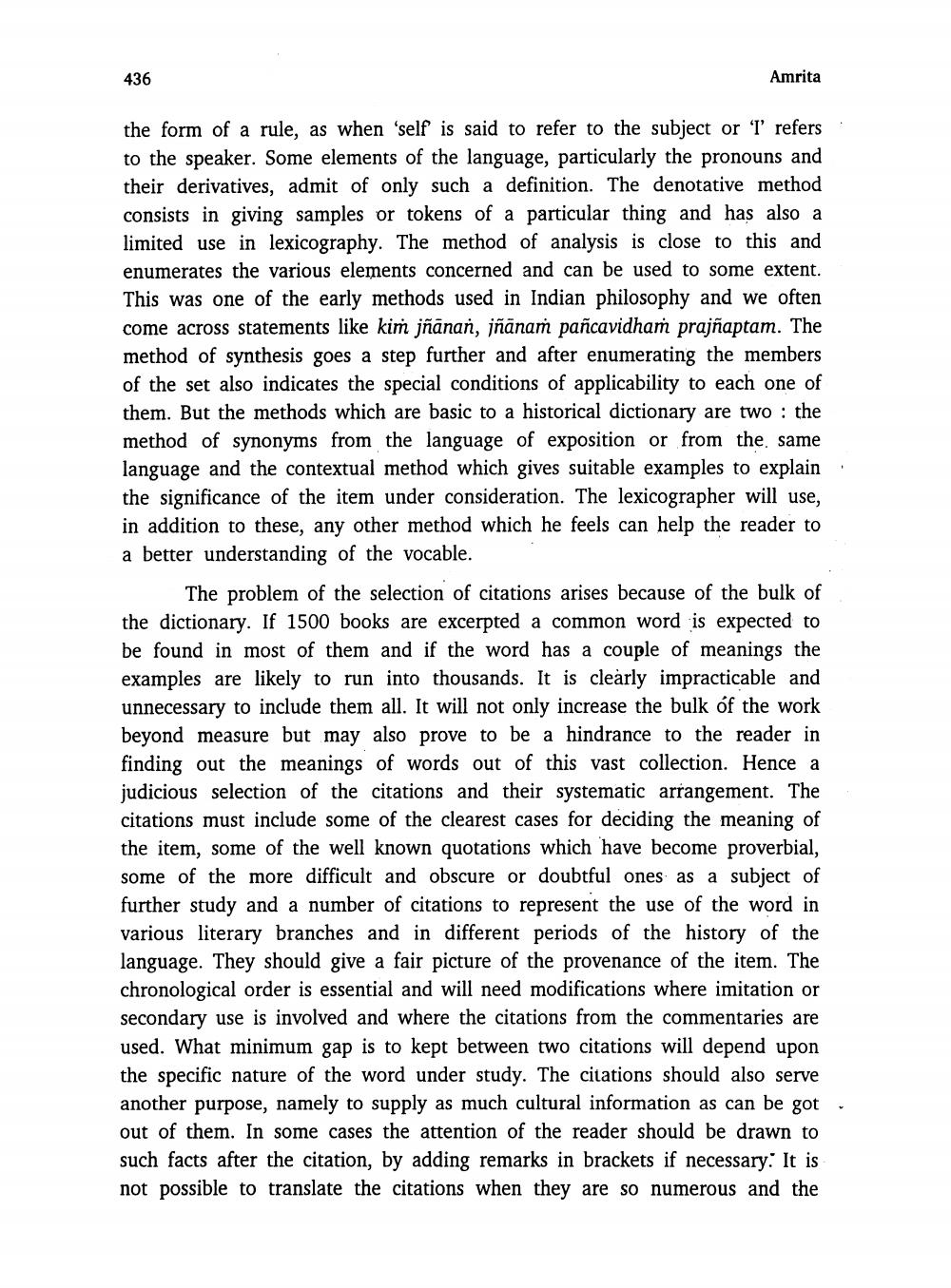________________
436
Amrita
the form of a rule, as when 'self is said to refer to the subject or 'l' refers: to the speaker. Some elements of the language, particularly the pronouns and their derivatives, admit of only such a definition. The denotative method consists in giving samples or tokens of a particular thing and has also a limited use in lexicography. The method of analysis is close to this and enumerates the various elements concerned and can be used to some extent. This was one of the early methods used in Indian philosophy and we often come across statements like kim jñānan, jñānam pañcavidham prajñaptam. The method of synthesis goes a step further and after enumerating the members of the set also indicates the special conditions of applicability to each one of them. But the methods which are basic to a historical dictionary are two : the method of synonyms from the language of exposition or from the same language and the contextual method which gives suitable examples to explain : the significance of the item under consideration. The lexicographer will use, in addition to these, any other method which he feels can help the reader to a better understanding of the vocable.
The problem of the selection of citations arises because of the bulk of the dictionary. If 1500 books are excerpted a common word is expected to be found in most of them and if the word has a couple of meanings the examples are likely to run into thousands. It is clearly impracticable and unnecessary to include them all. It will not only increase the bulk of the work beyond measure but may also prove to be a hindrance to the reader in finding out the meanings of words out of this vast collection. Hence a judicious selection of the citations and their systematic arrangement. The citations must include some of the clearest cases for deciding the meaning of the item, some of the well known quotations which have become proverbial, some of the more difficult and obscure or doubtful ones as a subject of further study and a number of citations to represent the use of the word in various literary branches and in different periods of the history of the language. They should give a fair picture of the provenance of the item. The chronological order is essential and will need modifications where imitation or secondary use is involved and where the citations from the commentaries are used. What minimum gap is to kept between two citations will depend upon the specific nature of the word under study. The citations should also serve another purpose, namely to supply as much cultural information as can be got, out of them. In some cases the attention of the reader should be drawn to such facts after the citation, by adding remarks in brackets if necessary: It is not possible to translate the citations when they are so numerous and the




